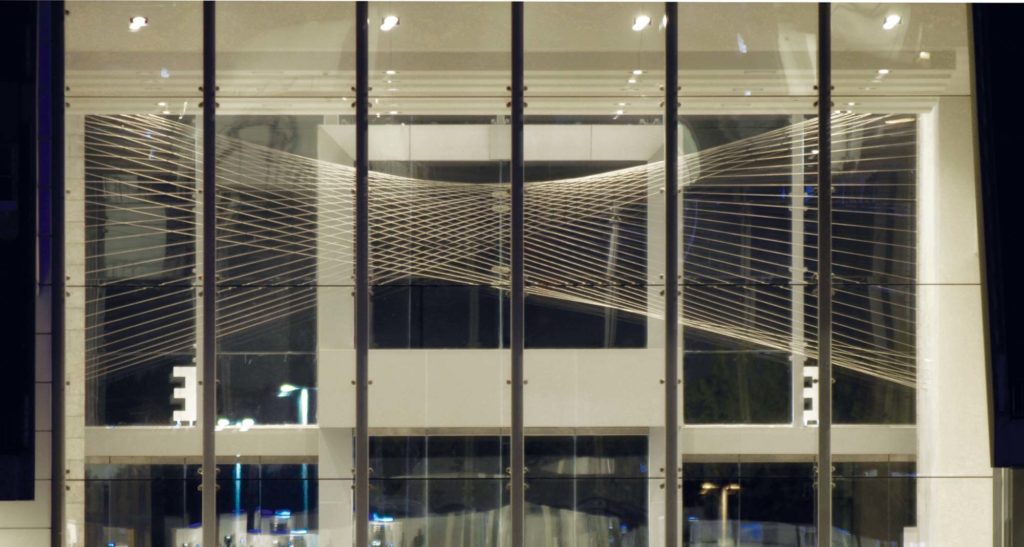
Stranded cable
14 feet diameter by approximately 45 feet (span)
Just about every sculpture that has ever been made has had to struggle against gravity—to fight against its downward tug, to rise up off the ground, and to stand tall with the authority of a monument. Mobiles are different because they hang from the ceiling. But their affect also depends upon a balance with gravity being struck, so that they seem to float in midair.
Annette Lawrence’s graceful sculpture stands apart from this history for one simple reason: gravity does not matter to it. As an original work of art, it has as much to do with the nearly immaterial installations of California’s Light-and-Space movement as it does with the geometric sculptures of such New York Minimalists as Donald Judd and Fred Sandback. Lawrence’s tautly stretched steel cables inhabit an architectural interior, enhancing the grand entrance by giving elegant form to the passage of time and the movement of bodies through space.
The North Texas artist’s hourglass-shaped sculpture comes alive when one walks under it. That is when the gentle curves of its profile shift, causing the open volume it wraps around to appear to contract and expand. Dazzling reflections dance off its shiny silver cables. The faster one walks, the faster he or she spirals through space. This movement is suggested by the work’s title, Coin Toss (2009), which calls to mind the start of each game when a coin spins through space in a very similar manner to that described by Lawrence’s streamlined sculpture as it commands a lot more space than it actually occupies.